Bhujangasana: Health Benefits,Types and How to do?
What is Bhujangasana (Cobra Stretch)?
Bhujangasana is pronounced as Bhu-jung-aahs-uh-nuh.
Bhujangasana arrives from the word bhujanga meaning cobra or snake and asana refers to pose. Bhujangasana is also famous as Cobra Stretch. This pose is involved in Suryanamaskar (Sun Salutations Pose) as well as Padma Sadhana.
Bhujangasana (Cobra Pose) is a heart-opening back bend that stretches your whole upper body and can give relief if you’re feeling back pain, upper body soreness or tightness in your shoulders.
Begin your practice with Sukshma Vyayam or subtle exercises. These include gentle rotation of the neck, arms, hips, wrists, ankles to slowly warm up the joints. Walk around briskly, and mobilise and stretch your muscles. This will prepare your body for a performance, and keep you safe from practice-related injuries. Before you try any back-bending postures, ensure that your the body is sufficiently warmed up.
What are the Health Benefits of Bhujangasana?
The following are the cobra pose advantages for men and women alike:
Increases Your Flexibility
One of the biggest benefits of bhujangasana is that it improves your flexibility.
Enhances Your Mood
If you’ve been feeling the blues, performing bhujangasana every day will make you feel better. It aids eliminate depression, reduces stress, and most importantly, leaves you in a good mood when you’re done with it for the day.
Regulates Your Digestion
Since the pose gently targets your abdominal muscles, it aids not only tone them up but also makes sure that your kidneys and internal organs feel restored. The result is that the gastrointestinal function gets a boost.
Enhances Strength
Besides flexibility, the posture also increases the strength of your vertebral column and arches your spine. The muscles of the backstretch better, and it ends up toning other areas in your body like the shoulder, glutes, and legs too.
Reduces Your Risk of Getting an Injury
If your hip flexors aren’t strong enough, you might get injured when going on extreme runs or cycling sessions. The cobra pose strengthens the muscles in that area and enhances blood circulation, keeping you safe during your workouts and outdoor adventures.
Activates Your Kundalini
The kundalini connects you to your higher consciousness and the cobra pose is the gateway to that. When you awaken your kundalini, you get an enhanced spiritual awareness and achieve self-realization. You become able to look the world as it is and the physical advantages of awakening it translates to no more kidney stones, liver or gall bladder problems, etc.
Balances Your Chakras
When you do the cobra pose every day, it balances your chakras and takes you higher on the path to spiritual insight. One of the major advantage of that is optimal well-being – spiritually, physically, and emotionally.
Relieves Sciatica
For those who suffer from sciatica pain, the good news is that the cobra pose will naturally give you pain relief. It reduces discomfort in the spine and slowly stretches your spinal muscles, thus loosening them up.
Provides Asthma Relief
Since the cobra yoga pose opens up your lunges and chest muscles, you end up breathing more clearly due to the passages clearing up. This gives you relief from asthma and fixes breathing problems.
Regulates Emotions
The biggest benefit of this pose is not just the spiritual and physical benefits it brings, but the emotional ones mainly. You feel calmer, centred, and balanced when you do this every day. You get relieved from your anxiety, and any negative emotions are slowly flushed out, leaving you feeling happier, lighter, and more positive.
The male and female reproductive systems improve.
Irregular menstrual cycle problems are corrected too.
What are the Prerequisites for Bhujangasana?
It is best to perform this asana in an ideal physical state, to enjoy maximum advantages.
- Make sure you do this asana 4-5 hours after having your main meal. This will assure that you are not uncomfortable lying on your stomach.
- Assure that you have done some basic warm-up and stretching exercises to loosen your neck, arms, shoulders, and back.
- It is always best to perform yoga asanas in the morning. However, if that’s not possible, make time in the evening.
What are Preparatory poses for Bhujangasana?
- Adho Mukhasvanasana (Downward-facing Dog Pose)
- Salamba Bhujangasana (Sphinx Pose)
- Salabhasana (Locust Pose)
How to do Bhujangasana (Cobra Stretch)?
Lie down on your stomach with your toes flat on the ground, soles facing towards the roof; rest your forehead on the floor.
Place your legs close together, with your feet and heels slightly touching each other.
Place both hands in such a way that your palms are touching the floor under your shoulders, elbows should be parallel and close to your upper body.
Taking a deep inhalation, slowly raise your head, chest, and abdomen. Keep your navel on the ground.
Pull your upper body back and off the ground with the support of your hands. Make sure that you are giving the same pressure on both the palms.
Do breathing with awareness, as you curve your spine, vertebra by vertebra. If possible, extend your arms by arching your back as much as possible; tilt your head back and look upward.
Keep the pose while breathing evenly for 4-5 breaths.
Now, exhale, and gently bring your abdomen, chest, and head back to the ground and relax.
Repeat 4-5 times.
How to do Bhujangasana by watching a video?
What are the Counter poses for Bhujangasana?
- Balasana (Child’s Pose)
- Ardha Matsyendrasana (Half Lord of the Fishes Pose)
- Adho Mukha Svanasana (Downward-Facing Dog Pose)
- Ananda Balasana (Happy Baby Pose)
What are the tips for beginners?
Keep smiling and breathing. Smiling Cobras! While Bhujangasana has many advantages and almost everyone can perform it, in In some cases, it’s advised to prevent it.
- Avoid overstretching and jerks.
- You may instinctively move your shoulders away from your ears. Keep them relaxed, even if it means flexing your elbows. With daily practice, you will be able to deepen the stretch by extending the elbows.
- Assure that your feet are still close together.
- While keeping the pose, breathe evenly.
What is the variation of Bhujangasana?
There is a creation variation of the Cobra pose:
Cobra with support under your hips
Put a pillow, small bolster, or folded blankets under your hips to increase a little height and to take the pressure out of the lower back. If you experience any pinching or pain in your lower back, widen the distance between your feet, which forms more space in your pelvis and hips and engages the glutes.
Cobra Pose Hands Wall
Inhale Cobra Pose, stretch the hands out to find the wall and trace them up until they are extended, push into the palms and the tops of the feet to raise the chest and head for Cobra pose.
What are the Types of Bhujangasana or Cobra pose?
There are some type of Cobra pose :
- Traditional Bhujangasana
- Ardha Bhujangasana or Half Cobra Pose
- Hasta Bhujangasana or Curved Hand Cobra
- Urdhva Bhujangasana or Raised Arm Cobra
- Salamba Bhujangasana or Sphinx Pose
Traditional Bhujangasana
This is mentioned above.
Ardha Bhujangasana or Half Cobra Pose
What is Ardha Bhujangasana?
Ardha bhujangasana is a beginner back bend that sets less strain on the back than bhujangasana, which is one of the most common poses are done across many styles of yoga and are part of the Sun Salutation vinyasa. The name arrives from the Sanskrit, Ardha refers to “half”; bhujanga, which means “cobra,” “serpent” or “snake”; and asana, which means “pose” or “posture.”
In English, Ardha bhujangasana is called half cobra pose.
Half cobra pose, or Ardha bhujangasana in Sanskrit, is a novice’s version of the cobra pose. It’s a much less extreme back bend and great for students who are just learning yoga. Instead of pushing completely into the hands, only a small amount of pressure is used against the ground, and the abdomen remains on the floor.
How to do Ardha Bhujangasana?

Lie in a prone position with the legs together. Keep the forehead on the ground.
Place the hands on the ground beside the chest and spread the fingers wide.
Engage the legs. take a breath in and push into the hands, raising the forehead and chest from the floor. Rotate the shoulders down the back.
Breathe while holding the posture.
Now breathe out and release.
Benefits of Half Cobra Pose :
Physical Benefits-
- Unlocks the shoulders and chest.
- Refreshes the spinal nerves and back muscles.
- Activates the digestive and pelvic organs.
- Strengthens and makes the spine and back more flexible, correcting disc deviations.
- Re-energises chest and neck muscles.
- Improves intestinal, prostate, and ovarian function.
- Prevent lumbago, sciatica, and asthma.
- Improves blood circulation.
- Improves posture.
Mental Benefits-
- Decreases stress.
- Improves concentration.
- Relieves mild depression.
- Relieves anxiety.
Contraindications for Half Cobra Pose :
Do not practice this asana if you have the following injuries or ailments:
- Back injury
- Headache
- Pregnancy
- Wrist problems
- High blood pressure
- Severe spinal injury
- Severe neck injury
Caution for Half Cobra Pose :
- Do not give a jerk (a sudden abrupt pull) to lift your body.
- The navel or lower part of the navel must not be lifted.
- Put less weight on your hands. put equal weight on the spine and arms.
- While in the last position, the thumb should touch the chest near the armpit.
- The starting weight can remain on the hands.
- While returning some persons bend their head first but it should be avoided. The part of the body which leaves the floor first will return to the floor last.
Hasta Bhujangasana or Curved Hand Cobra or Vakra Hasta Bhujangasana
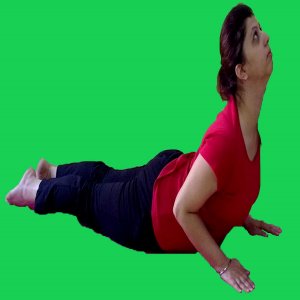
Hasta bhujangasana or curve hand cobra pose is the second famous posture. Here you can do the yoga without straightening the arms and by flexing them. Also, you can turn your hands outward in this yoga.
The curved hand’s cobra pose (Vakra Hasta Bhujangasana) is an effective cobra pose that aids to enhance the efficiency of digestive system. Ardha Bhujangasana (Half cobra pose) is also called a sphinx pose because the last asana is resemble an Egyptian sphinx.
Urdhva Bhujangasana or Raised Arm Cobra or Saral Hasta Bhujangasana
Urdhava Bhujangasana resembles traditional bhujangasana.The difference is the hand’s position on the floor. In bhujangasana your hands should be near the shoulders, while in Urdhva Bhujangasana hands placed near your waist to give a fully straight arms.
Salamba Bhujangasana or Sphinx Pose
What is Salamba Bhujangasana ?
Salamba – Supported, Bhujang – Cobra, asana – pose
Pronounced: SA-lumb-aa-BHu-Jung-AAhs-uh-nuh
Salamba Bhujangasana (Sphinx pose) is a modified type of Bhujangasana to help beginners ease their way into it. This pose is also good for people who have lower back pain as it has less arch and therefore relieves the pressure on the spine.
Salamba bhujangasana is a yoga position for beginners that opens the chest and shoulders and strengthens the spine.
Salabma bhujangasana is often referred to as a sphinx pose in English.
Salamba bhujangasana is a moderate back bend, suitable for most beginners. It is a variation of bhujangasana or cobra pose, and can be a good modification for people who have lower back trouble. This pose revitalises the body, soothes the nervous system and is therapeutic for fatigue. It is a preparatory position for deeper back bends.
In spiritual practice, salamba bhujangasana is also a heart opener. It activates the Anahata, or heart chakra, situated at the heart centre. In yoga, it is believed that opening this chakra aids to increase Self-love, alleviating depression, and supporting a more a positive outlook on life.
How to do Sphinx Pose (Salamba Bhujangasana):
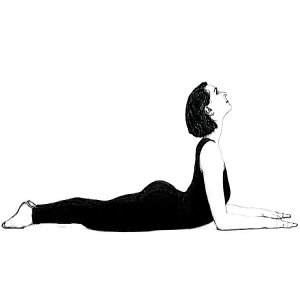
Lie in a prone position with your toes flat on the ground and your forehead resting on the floor.
Keep your legs close together, with your heels and feet lightly touching each other.
Extend your hands in front of you with palms facing downward and arms touching the floor.
Taking a deep breath in, slowly raise your head, chest, and abdomen while keeping your navel on the ground.
Pull your upper body back and off the ground with the support of your arms.
Continue breathing with awareness, as you curve your spine vertebra by vertebra.
Make sure that your feet are still close together and your head facing straight ahead.
Exhale, gently bring down your abdomen, chest, and head back to the ground.
Benefits of the Sphinx Pose (Salamba Bhujangasana):
- Strengthens the Spine – Sphinx Pose strengthens the spine by stimulating the back muscles, especially the spinal erectors.
- It Helps to Improve the Lung Capacity – Our lungs are situated in the chest cavity, when we perform the Sphinx pose, it assists to create space in the lungs and therefore increases lung capacity. The more lung capacity, the greater is your breathing pattern.
- Sphinx Pose Improves Digestion – Sphinx Pose stimulates our abdominal organs like the stomach and intestines which aids improve our digestion process. It also raises blood flow to the digestive system as well as other organs of the body making them function at their best.
- Improves Blood Circulation – Salamba Bhujangasana or Sphinx pose stretches out chest muscles which rises oxygenated blood flow throughout the torso region. “This makes sure that all vital organs get enough stock of nutrients from food digested earlier so they can do their functions systematically without any interruption”. This will aid you to fight fatigue and keeping up with your daily routine without feeling tired often.
- Sphinx Pose is a Good Way to Reduce Stress and Anxiety – “Sphinx Pose is a good way to reduce stress and anxiety.” “It relaxes the mind by lowering tension from the neck, shoulders along with lower back muscles which are major givers in causing stress- related issues like headache or migraine attacks”. This asana has a calming effect on both body as well as the nervous system making you feel more relaxed after performing it regularly over time.
- It aids in Improve Breathing patterns – Sphinx Pose is known to aid improve the breathing pattern. The healthier our breathing, the more oxygenated blood flow we get and that keeps all vital organs functioning correctly. This asana should be a section of your yoga routine if you are looking for ways to boost your overall health and well-being”.
- It is a Good Way to Begin Your Yoga Practice – Salamba Bhujangasana or Sphinx pose is an excellent asana to start your yoga practice with. It warms up the body and gets ready for more challenging poses. So, if you are new to yoga or looking for a simple pose that can offer multiple advantages.
Contraindications of Sphinx Pose (Salamba Bhujangasana):
A person with spine injuries and stiff necks should avoid doing it as the Salamba Bhujangasana places considerable pressure on your abdominal area.
This pose ends up harming their unborn child if they are pregnant or have other medical problems such as Salmana Bhyang(spinal meningocele).
Sphinx pose should be prevented if you are pregnant, have fractured ribs or wrists, or recently experienced abdominal surgery.
If you have any back problems like sciatica pain or neck issues then avoid performing this pose as it might aggravate those conditions further instead consult your doctor before initiating Sphinx Pose.
Beginner’s Tips for Sphinx Pose (Salamba Bhujangasana):
Beginners should start performing this pose under the supervision of an expert yoga teacher who can teach them through proper steps so there won’t be any injuries due to the wrong alignment while performing Salamba Bhujangasana (Sphinx Pose).
Make sure to keep your scapulae pressed down firmly against the ground and gaze straight ahead to maintain correct alignment throughout the pose.
If you find it hard to hold this pose for a long time, begin by practising it for a few seconds and then gradually raise the duration as you get comfortable with the pose.
What are the Precautions You Should Take While Doing Bhujangasana?
Well, if you are doing the bhujangasana then you need to follow a few precautions. Remember that you should feel the pressure on the limbs, feet, and hands but not in the back. In this section, we have cited the precautions that you should take while doing the bhujangasana.
Problem With Stiff Neck
Well, during the bhujangasana or cobra pose the neck is flexed upward from the spine. Now make sure to perform this properly as well as slowly. Also, remember to breathe completely through the nose. If you do not perform gently then it can hurt your neck and can cause the neck muscles to get extended.
Wrong Hand Placement
To maintain the correct Bhujangasana pose, the hands should be kept at an even distance from the shoulders. If you do not keep the arms at a more distant, the shoulders will not form any back arch. This is why the posture will not be correct and the body will be harmed.
Pull the Elbows Closure
It will not be necessary to lock the elbow while performing Bhujangasana. There are times when a person locks their elbows.
Everyone’s body has different boundaries, therefore do not move far off the limits of your body.
Who Should Avoid performing Bhujangasana?
Though bhujangasana is safe, there is a group of people with specific problems, who shouldn’t do Bhujangasana altogether.
- People who suffer from acute neck illnesses like spondylitis.
- Cobra pose should not be performed if you have a severe spinal operation or injury.
- Do not perform Bhujangasana if you are pregnant.
- Do not try this if you have newly had stomach surgery.
- The person who has carpal tunnel syndrome or any other wrist issue should avoid it completely.
- If you have a severe headache problem, consult a doctor before doing any asana such as migraine.
- Do not perform it if you have fractured ribs.
- Do not perform this yoga pose during an asthmatic attack.
- Perform the Cobra Pose under a trained teacher for guidance if you have suffered from chronic illnesses or spinal disorders in the past.

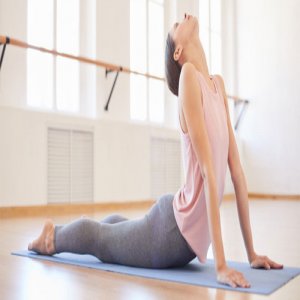
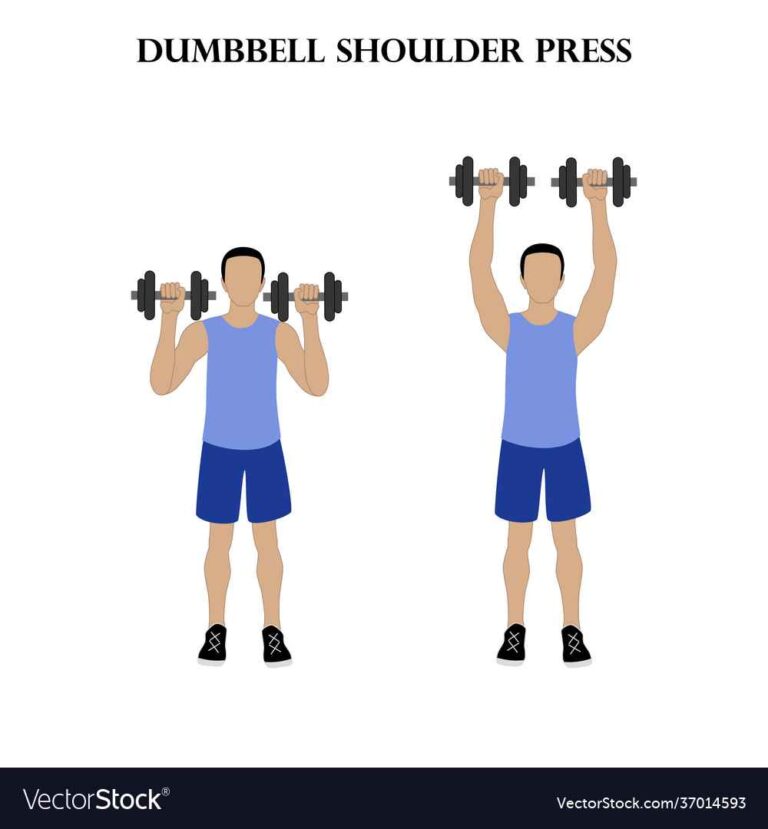
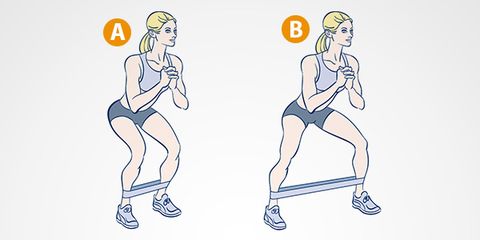
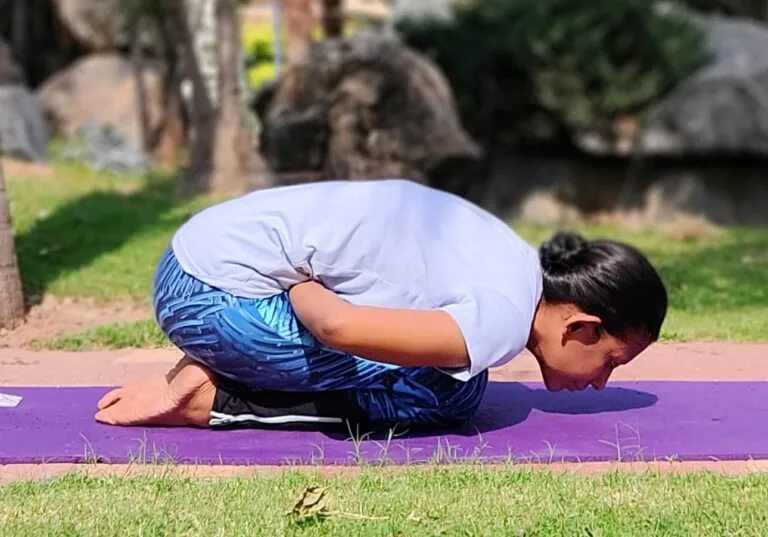
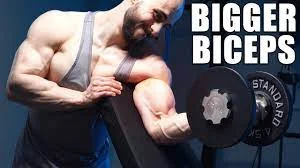
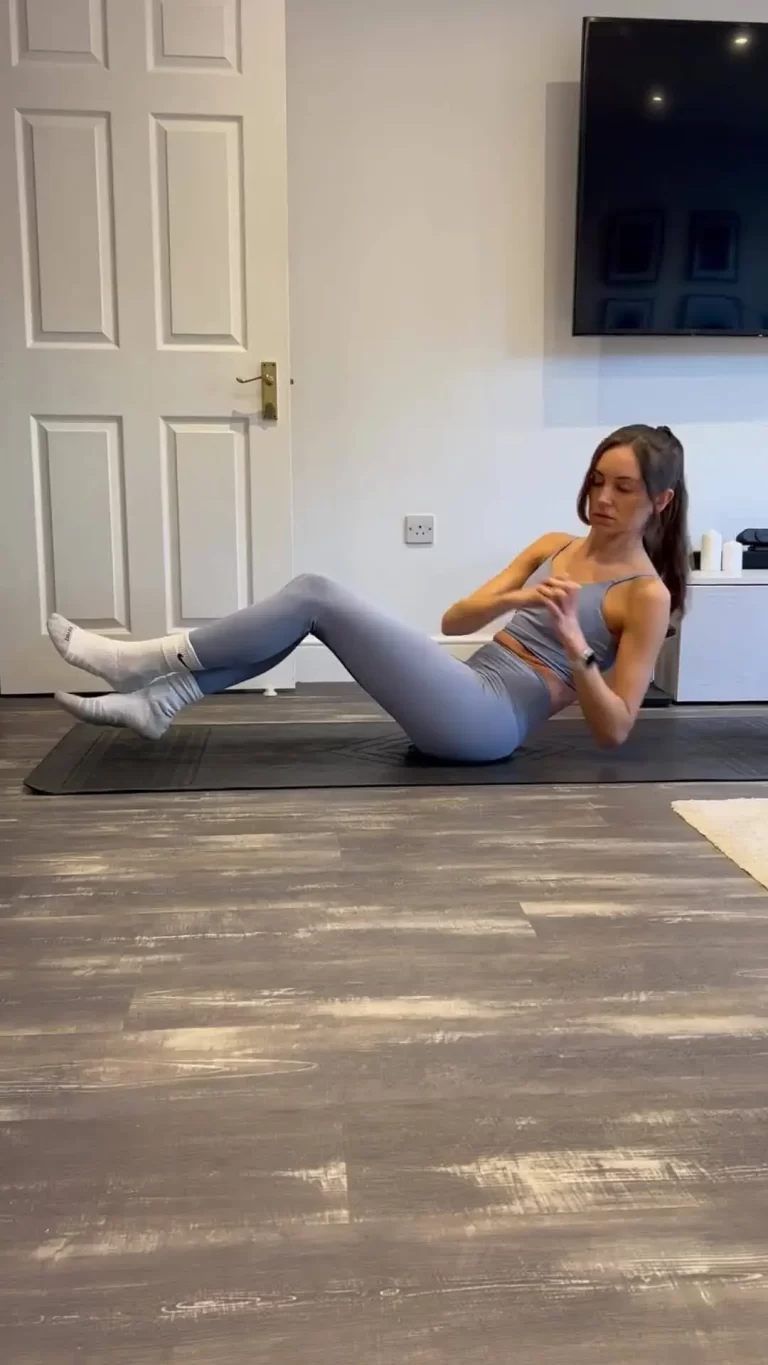
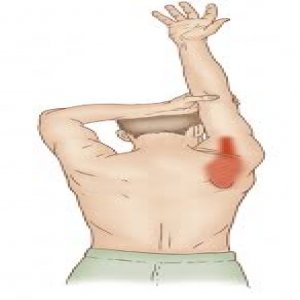
6 Comments